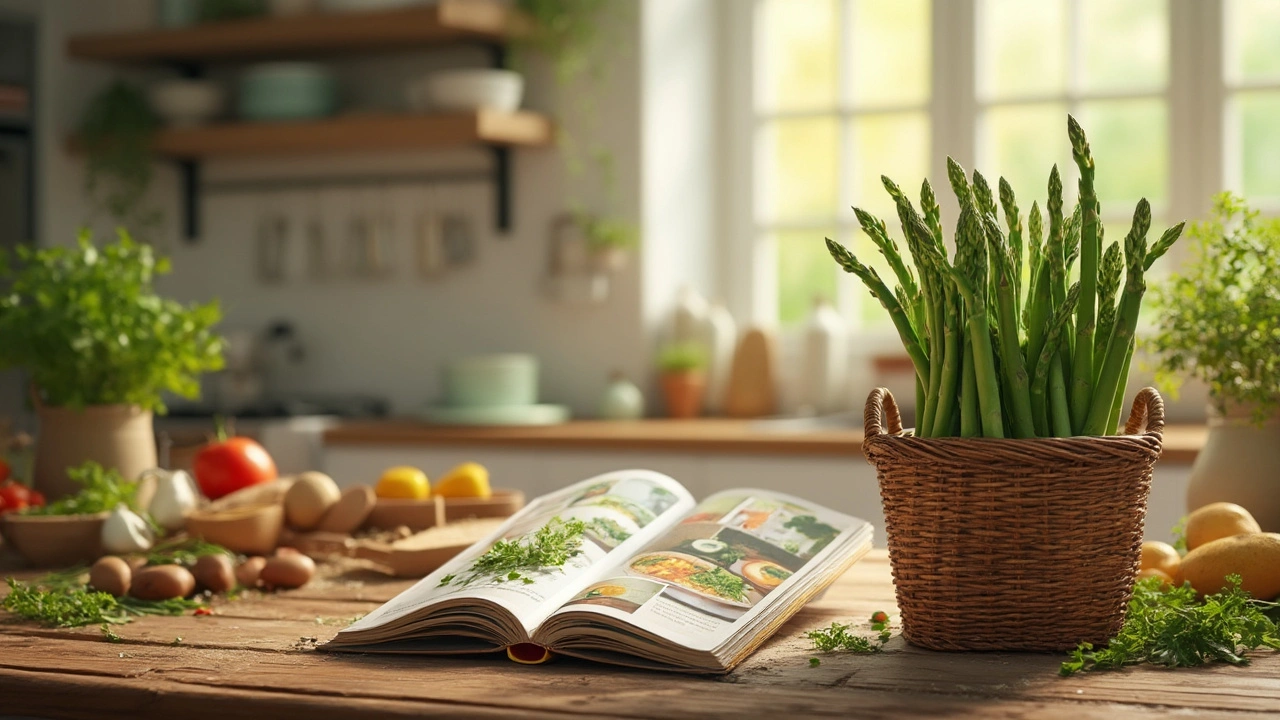Asparagus – Quick Guide to Health, Cooking & Fun Facts
If you’ve ever wondered whether asparagus is worth the fuss, the answer is a clear yes. This green spear packs nutrients, tastes great, and is simple to add to most meals. Below you’ll find the basics you need to know, plus a few easy ways to get it on your plate without any kitchen drama.
Why Asparagus Is Good for You
First off, asparagus is low in calories but high in vitamins. One cup of cooked spears gives you about 40% of the daily need for vitamin K, which helps blood clot properly and supports bone health. It also provides vitamin C, folate, and vitamin A – nutrients that keep your immune system sharp and your skin glowing.
Fiber is another win. The insoluble fiber in asparagus adds bulk to your stool, helping keep digestion regular. The soluble fiber feeds good gut bacteria, which can reduce inflammation and improve overall gut health. For those watching blood sugar, the low glycemic load means asparagus won’t cause spikes.
One of the standout compounds is asparagine, an amino acid that supports healthy brain function. Asparagus also contains antioxidants like glutathione, which protect cells from damage. In short, eating asparagus regularly can help heart health, bone strength, and even mood stability.
Easy Ways to Cook Asparagus
Cooking asparagus doesn’t require a gourmet’s skill set. Here are three fool‑proof methods:
1. Quick Sauté: Heat a splash of olive oil in a pan over medium heat. Toss the trimmed spears, season with salt and pepper, and cook for 4‑5 minutes, shaking the pan occasionally. You’ll get a slight char that brings out a nutty flavor.
2. Simple Roast: Preheat the oven to 425°F (220°C). Lay the spears on a baking sheet, drizzle with oil, sprinkle a pinch of garlic powder, and roast for 10‑12 minutes. The edges become crisp while the inside stays tender.
3. Steamed Snap: Place a steam basket over boiling water, add the spears, cover, and steam for 3‑4 minutes. Immediately run them under cold water to lock in color. Finish with a squeeze of lemon for brightness.
All three methods keep the texture snap‑like and preserve most of the nutrients. Pair the cooked spears with a little grated Parmesan, a dash of balsamic vinegar, or toss them into salads, pastas, or grain bowls.
When you buy asparagus, look for firm stalks with tight, closed tips. If the tips are opening, the spears are past their prime. Store them upright in a jar with a little water, like a bouquet, and cover loosely with a plastic bag. They’ll stay fresh for up to a week.
That’s the core of what you need to know about asparagus – why it’s healthy, how to handle it, and three hassle‑free ways to cook it. Give it a try this week and see how quickly it fits into your meals. You’ll get a nutrient boost without any extra effort, and the taste will keep you coming back for more.
Discover the underrated superfood that is asparagus. Packed with vitamins and essential nutrients, it’s a game changer for those aiming to enhance their dietary supplements. Learn interesting facts, tips on preparation, and why this vegetable should be a staple in your meal plans. Whether you're a health enthusiast or a casual cook, asparagus offers a versatile and beneficial boost to your diet.
Continue reading





